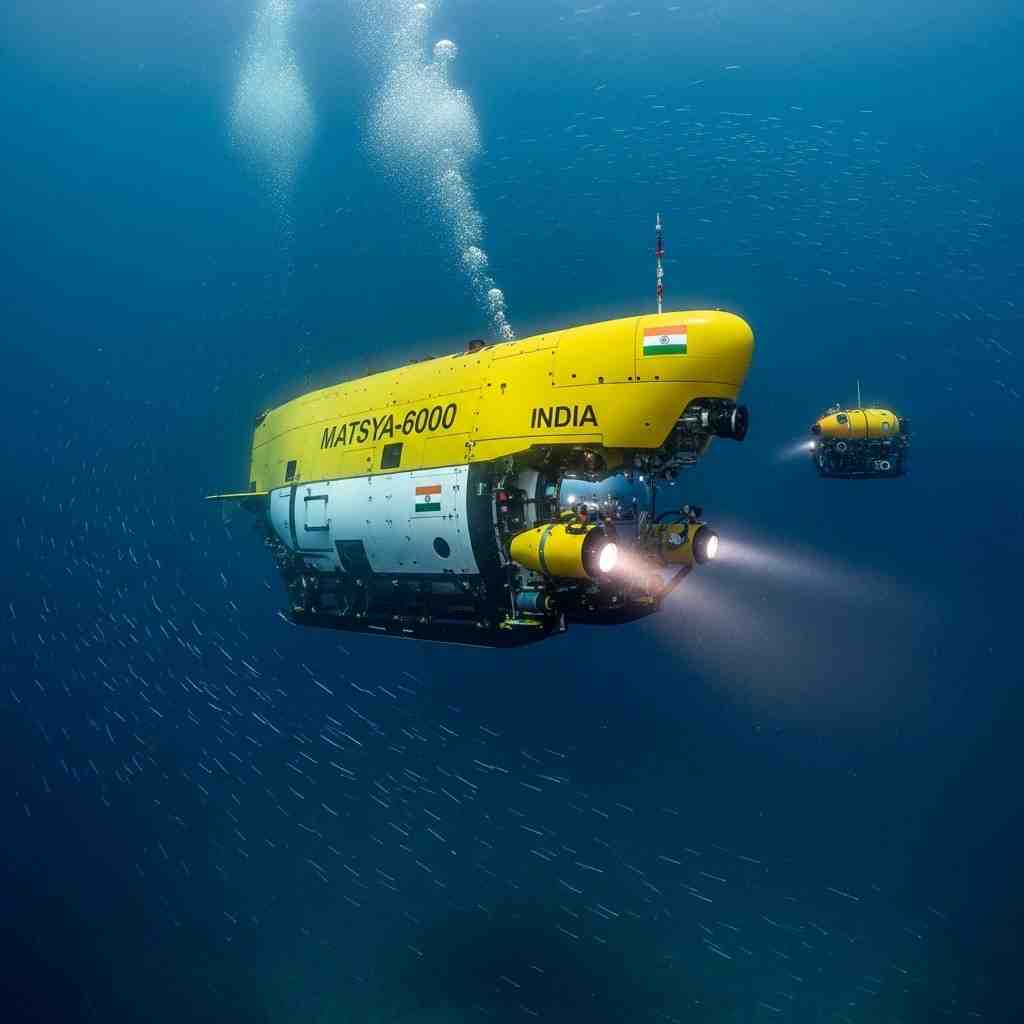
India Set to Launch 500 m Sea Trials of Matsya-6000 Submersible
India is preparing to conduct the first 500-metre sea trial of its indigenously developed deep-sea submersible, Matsya-6000 , off the coast of Chennai. The mission marks a critical step in India’s plan to reach 6,000 metres depth by 2027 under the ambitious Deep Ocean Mission , which aims to strengthen the country’s scientific and strategic presence in the deep sea.
Major Breakthrough for Deep Ocean Mission
Matsya-6000 is India’s first manned submersible , capable of carrying a team of two scientists from the National Institute of Ocean Technology (NIOT). The upcoming test places India among the few nations advancing human-occupied deep-sea platforms. The submersible is designed to enable exploration of mineral resources, hydrothermal vents, biodiversity hotspots and deep-sea ecosystems—sectors crucial to India’s blue economy roadmap.
Indigenous Engineering and Technological Innovation
The 28-tonne submersible has been engineered through collaboration across India’s premier defence, space and scientific institutions. A highly specialised titanium alloy personnel sphere , fabricated with advanced welding and precision engineering, will allow the vehicle to withstand pressure at 6,000 metres—nearly 600 times atmospheric pressure. Matsya-6000 is equipped with Li-Po batteries, robotic manipulators, emergency ballast systems, thrusters, portholes and imaging equipment to support scientific sampling and observation.
The 500-metre trial is the first step toward progressively deeper test dives. All components undergo certification by a global risk-assessment agency before the vehicle proceeds to full-depth missions.
Exam-Oriented Facts
-
Deep Ocean Mission targets 6,000 m depth exploration by 2027 .
-
Matsya-6000 uses an 80-mm titanium alloy sphere to withstand deep-sea pressure.
-
India has an 11,098 km coastline supporting its blue-economy vision.
-
Submersible components require certification by an international risk management agency .
Month: Current Affairs - November 20, 2025
Category: Science, Technology-Oceanography